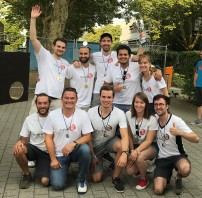
HI-STEM Researchers do not only know how to deal with stem cells but also how to score as was shown during the 2018 DKFZ Summer Party. Two mixed teams started both defeating all other teams leading to a double victory for out two teams!

HI-STEM Researchers do not only know how to deal with stem cells but also how to score as was shown during the 2018 DKFZ Summer Party. Two mixed teams started both defeating all other teams leading to a double victory for out two teams!
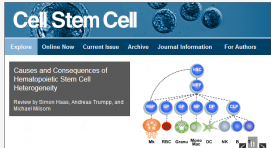
Classically, stem and progenitor populations have been considered discrete homogeneous populations. However, recent technological advances have revealed significant hematopoietic stem cell (HSC) heterogeneity, with evidence for early HSC lineage segregation and the presence of lineage-biased HSCs and lineage-restricted progenitors within the HSC compartment. These and other findings challenge many aspects of the classical view of HSC biology.
In our recent review in Cell Stem Cell, we analyse the most recent findings regarding the causes and consequences of HSC heterogeneity, discuss their far-reaching implications, and suggest that so-called continuum-based models may help consolidate apparently divergent experimental observations in this field.
Read more:
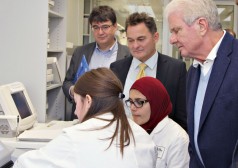
Since its installation in 2008, HI-STEM can look back at ten years of successful research. On March 28, 2018, the Dietmar-Hopp Foundation and the DKFZ have announced that the funding for HI-STEM will be prolonged until 20203. Additionally two new projects on circulating tumor cells and therapy resistance in pancreatic cancer.
All members of HI-STEM are grateful for the continuous generous support by the Dietmar Hopp Foundation and the DKFZ and are looking forward to five more years of exciting research!
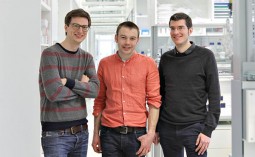
Two awards at once, both carrying high monetary prizes, go to two HI-STEM members: Simon Raffel will receive the 2017 Walter Schulz Prize for his discovery how misregulated breakdown of amino acids in leukemia stem cells promotes blood cancer. To find out more about this work, read our news feature.
Simon Haas will share the 2018 Otto Schmeil Prize with his colleague Lars Velten from EMBL. The two stem cell researchers have jointly demonstrated that the development of blood cells in the bone marrow follows very different paths from what scientists have assumed up to now.
Read more:
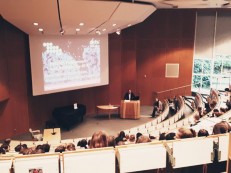
Today, over 200 high-school students have visited the DKFZ to learn more about stem cells and their potential for applications in medicine. The UniStem Day is an international endeaveour to educate young people. In Germany it is organized in parallel at eleven cities and is coordinated by the German Stem Cell Network (GSCN).